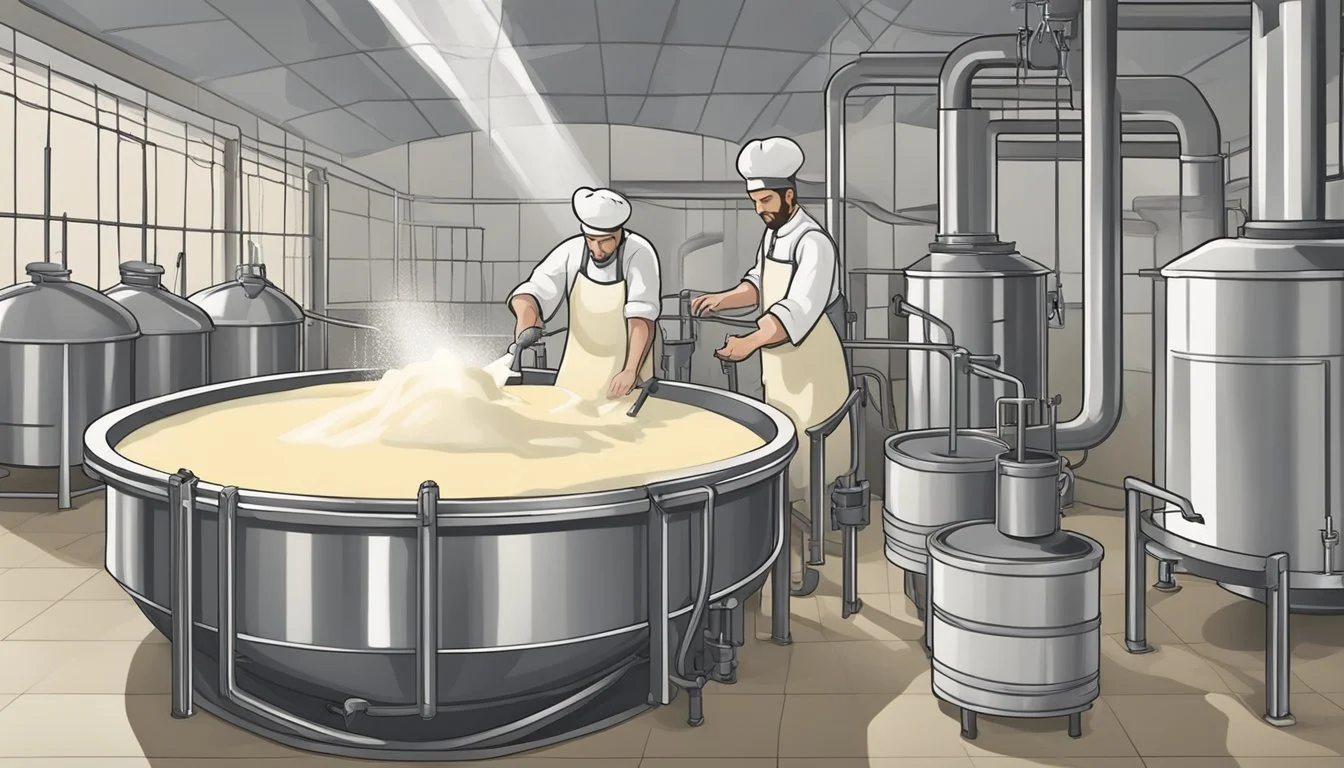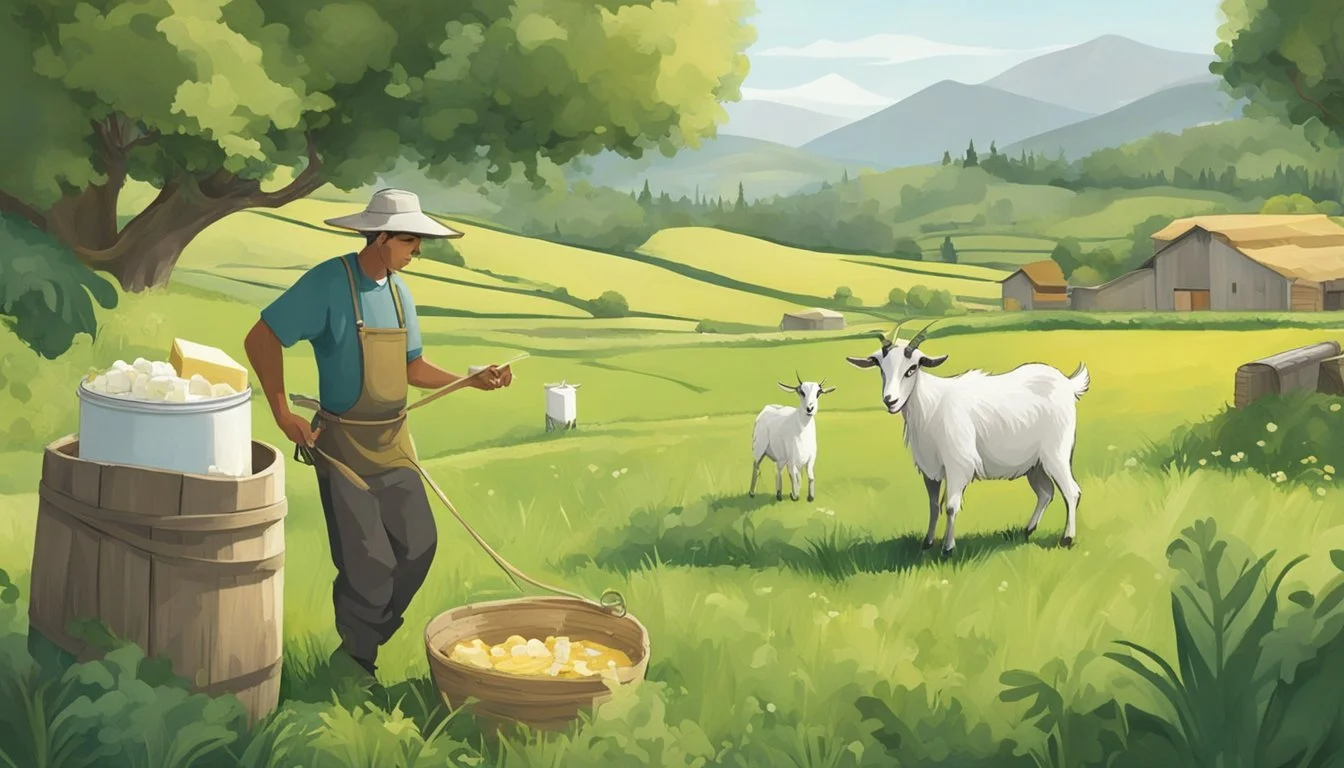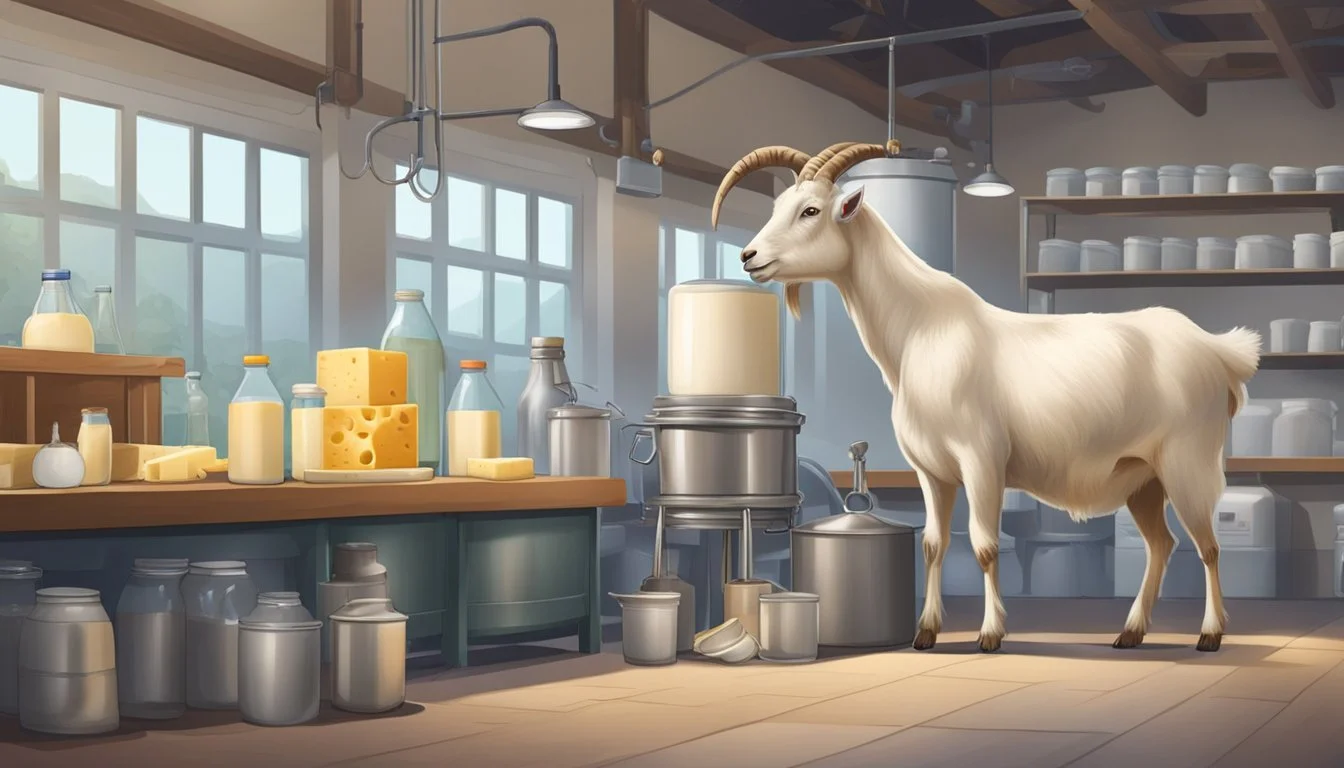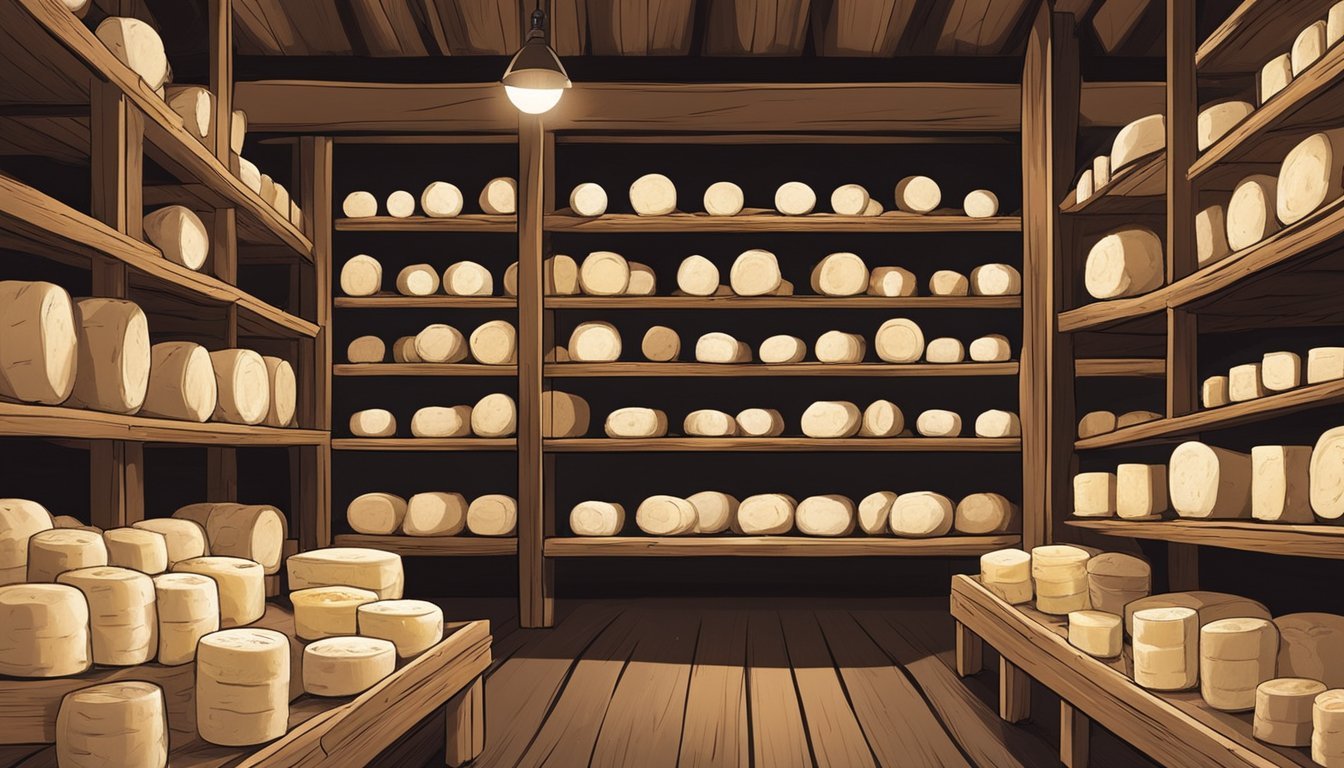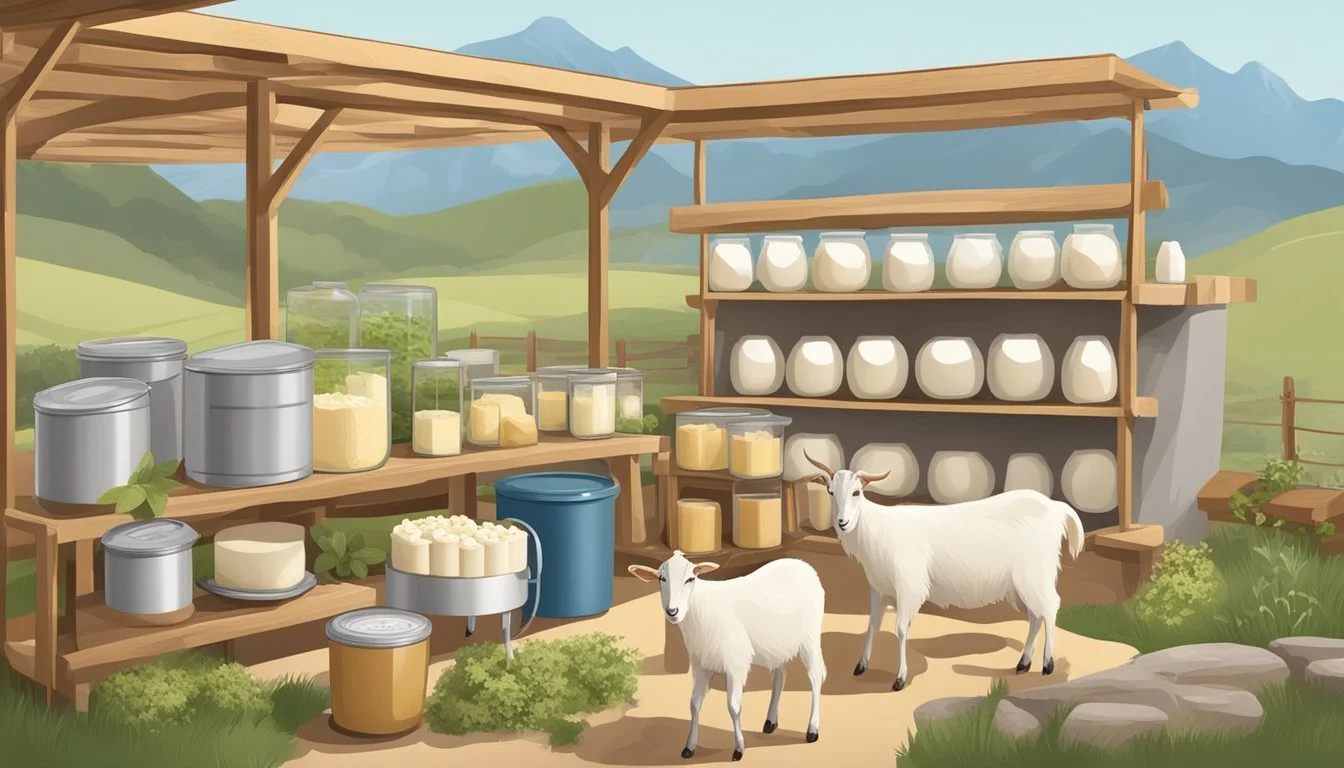Understanding the Cheese-Making Process with Goat Milk
A Comprehensive Guide
The cheese-making process transforms simple ingredients into a wide variety of flavors and textures, with goat cheese(What wine goes well with cheese?) standing as a remarkable example of this culinary alchemy. Starting with fresh goat milk, which is celebrated for its unique taste and health properties, cheese makers harness both art and science in this transformative procedure. The distinct flavor profile and nutritional benefits of goat milk set the stage for creating a cheese that's both versatile and distinct from its cow milk counterparts.
In preparing goat cheese, meticulous attention is paid to quality and temperature control during the initial stages. The milk is gently heated to optimal temperatures before a coagulant is introduced, typically either rennet or an acid, such as vinegar or lemon juice. This addition causes the milk to separate into curds and whey, a critical step in the cheese-making journey. The curds, which will eventually form the cheese, are then carefully collected and processed with techniques that will define the final product's texture and flavor.
Aging, or affinage, plays a pivotal role in developing the character of aged goat cheeses (What wine goes well with goat cheeses?), where time and conditions must be expertly managed to achieve the desired outcome. From the soft, fresh chevres to the firmer, more complex aged varieties, goat cheese is remarkably diverse. Whether enjoyed on its own or as part of a recipe, the nuanced flavors of cheese made from goat milk are a testament to the time-honored process behind its creation.
History and Significance of Goat Cheese
Goat cheese, with its storied past and diverse range, holds a significant place in gastronomy. Its origins are ancient and its cultural relevance spans continents.
Origins and Cultural Relevance
Goat cheese, or chèvre, has roots tracing back over 9,000 years to the Middle East, where goats were among the first animals domesticated. Evidence of goat cheese has been found in Egyptian tombs, dating back 5,000 years, suggesting its prominent role in early diets and civilizations. Cultural relevance of goat cheese is profound, as it seamlessly wove into the fabric of societies, from the rolling hills of the Middle East to the lush pastures of France, where the concept of terroir—the unique characteristics imparted by the environment—further elevated its status.
Goat Cheese Varieties Worldwide
French Varieties:
Selles-sur-Cher: A soft cheese with a nutty flavor.
Valençay: Distinctive pyramid shape with a mild, lemony taste.
Pélardon: Small and round, aged to develop earthy undertones.
Worldwide Varieties:
Feta: A brined curd cheese, common in Greece, crumbly and tangy.
Halloumi: Often from Cyprus, typically grilled or fried due to a high melting point.
The types of goat cheese are numerous and vary widely in textures, from soft, creamy spreads to firm, aged varieties. Each type reflects the culture and culinary traditions from which it originates, showcasing the versatility and global love for this dairy delight.
The Basics of Goat Milk
Goat milk is a fundamental ingredient in goat cheese production, valued for its unique composition and health benefits. It stands distinct from cow and sheep milk in several nutritional aspects.
Composition and Benefits
Goat milk offers a rich array of nutrients; it is an excellent source of protein, which is fundamental for muscle maintenance and repair. The fat content in goat milk is higher in medium-chain fatty acids, which are easier to digest compared to longer-chain fatty acids found in other types of milk. This milk also contains essential vitamins and minerals, with especially high levels of calcium.
The presence of saturated fat in goat milk is noteworthy, yet it's important to consider it within a balanced diet. Goat milk tends to have a lower lactose content when compared to cow milk, which can make it more tolerable for individuals with lactose sensitivity. As for carbohydrates, goat milk provides a similar amount as cow and sheep milk, offering energy and supporting bodily functions.
Both raw goat milk and pasteurized milk can be used in cheesemaking; however, pasteurization is typically recommended to ensure safety from pathogens.
Comparing Goat Milk to Cow and Sheep Milk
When comparing milk from milk goats, cows, and sheep, several differences emerge. Goat milk has a higher content of certain nutrients like vitamin A and potassium. It is often thought to resemble human milk more closely than cow's milk does, with smaller fat globules for easier digestion.
Sheep milk outperforms both goat and cow milk in terms of total protein and fat content, making it extremely rich and creamy. Its high fat content contributes to the distinct taste and texture of sheep cheeses. Cow milk tends to be the most consumed globally and is a versatile milk for various products, though it has a higher lactose content that can affect those intolerant to lactose.
Throughout various regions, milk production from goats has been a cornerstone in dairy industries, with diverse breeds contributing to the range of flavors and qualities found in goat cheeses. Goat milk's unique properties and nutritional profile make it a valuable resource for artisanal and commercial cheesemaking.
The Cheese-Making Process
The creation of cheese from goat milk is an intricate process that involves precise control over chemistry and biology to induce and control the transformation of milk into cheese. This section breaks down the key components and steps involved.
Understanding the Chemistry of Cheese
Cheese-making is fundamentally a biochemical process where milk proteins (casein and whey proteins) are altered by acids or enzymes like rennet, resulting in the formation of curds and whey. The curdling of milk is central to this process, it separates the solids from the liquids, providing the base material for the final cheese product.
Key Steps in Making Goat Cheese
The process begins with coagulating the milk, which involves heating it and then adding a coagulant such as an acid or enzyme like rennet. This causes the milk proteins to curdle, separating into solid curds and liquid whey. Typically, the steps include:
Pasteurization: Heating the milk to destroy harmful bacteria.
Inoculation: Adding starter cultures to begin the fermentation process.
Coagulation: Introducing rennet or an acid to create solid curds.
Cutting the Curd: The solid curds are cut into smaller pieces.
Cooking: The curds are gently heated to expel more whey.
Draining: The whey is drained off, leaving the curds behind.
Pressing: The curds are pressed into molds to form the cheese shape.
Aging: The cheese is left to age, developing flavor and texture.
Rennet and Cheese Cultures
Rennet is the key enzyme used in the cheese-making process to coagulate milk, while cheese cultures are specific strains of bacteria that are introduced as a starter culture. They not only aid in the fermentation but also play a significant role in defining the cheese's ultimate flavor and texture profile. The careful balance and interaction between the rennet and the starter cultures dictate the success of the cheese-making process.
Essential Techniques in Goat Cheese Production
Goat cheese production is a refined art that involves a series of careful steps to ensure the final product is flavorful and high-quality. The process begins with pasteurization to ensure safety and consistency, followed by precise heating, meticulous cutting of the curd, and thorough draining and molding. Adding salt and flavoring completes the transformation, resulting in a diverse array of goat cheeses.
Pasteurization of Milk
Pasteurized milk is essential for safe cheese production. The milk is heated to a specific temperature for a set period, effectively eliminating harmful bacteria while preserving the milk's natural flavor profile. A precise thermometer is used to monitor the temperature, ensuring that the milk reaches but does not exceed the necessary degree of heat.
Heating the Milk
Following pasteurization, the milk is slowly heated to prepare it for curdling. This step requires a gentle and uniform increase in temperature, often achieved with a double boiler or a water bath to prevent scorching. The target temperature is crucial as it affects the texture of the final cheese product.
Cutting the Curd
Once the milk has curdled, it is time for cutting the curd. This process involves slicing the set milk into smaller pieces, allowing whey to separate from the curds. The size of the cut curds can influence the cheese's moisture content—smaller curds tend to make a firmer cheese, while larger curds result in a softer variety.
Draining and Molding
The curds are transferred to a cheesecloth-lined colander to drain the whey. Some cheesemakers prefer to let gravity do the work, while others apply pressure to expedite the process. The drained curds are then placed into cheese molds. These molds give the cheese its final shape and allow for additional whey expulsion under the weight of gravity or applied pressure.
Salting and Flavoring
Salting is a pivotal step in goat cheese production, affecting both the flavor and the preservation of the cheese. Salt can be added directly to the curds or applied to the surface of the cheese. After salting, some cheeses are further enhanced with herbs, spices, or other ingredients to create an array of flavored goat cheeses. These additions can significantly influence the flavor profile of the final product, offering consumers a broad spectrum of tastes.
Aging and Storage of Goat Cheese
When crafting goat cheese, the aging and storage practices significantly influence its flavor, texture, and shelf life. These methods require precision and understanding to yield the finest cheeses.
Aging Process and Techniques
The aging process for goat cheese, also known as affinage, is critical for developing its unique characteristics. After the initial curdling and whey separation, the cheese is shaped and often placed under a cheese press to form the desired consistency. The environment during the aging phase must be carefully controlled, with factors such as temperature, humidity, and time being meticulously monitored. Aged goat cheese can take on various forms, from soft and spreadable to firm and crumbly, depending largely on the duration and conditions of the aging period. Techniques vary widely: some cheeses are wrapped in leaves or washed with brine, while others may develop a natural rind or are coated with edible ash to enhance their complexity.
Preservation and Serving Suggestions
Proper preservation of aged goat cheese maximizes its longevity and preserves its developed flavors. To store the cheese, its surface should be wrapped in parchment paper, followed by a loose layer of aluminum foil to allow the cheese to 'breathe' while avoiding moisture accumulation. Such cheese should ideally be kept in the least cool part of the refrigerator, avoiding areas with fluctuating temperatures.
When ready to serve, bringing the cheese to room temperature maximizes the aroma and flavor. As for freezing, it is generally not recommended for aged goat cheeses as it can alter the texture and quality. Ideally, ripe goat cheese should be enjoyed within its peak time frame to best experience the nuances that the aging process has instilled.
Application and Pairings of Goat Cheese
Goat cheese offers versatility in culinary applications and pairs exceptionally well with a diverse range of foods, enhancing flavors and creating balanced dishes.
Goat Cheese in Cuisine
Goat cheese is frequently celebrated for its ease of use in homemade dishes, providing a mild but distinctive earthy flavor. It's particularly popular when crumbled over salads to add a creamy texture and rich taste. Chefs often incorporate it into tarts, where its tangy profile complements both sweet and savory ingredients. Goat cheese also elevates the flavor of pizzas, adding a unique twist that contrasts with traditional mozzarella. Its soft consistency allows it to melt beautifully, contributing to a more gourmet pizza experience.
Pairing Goat Cheese with Other Foods
When it comes to pairing goat cheese with other foods, one should consider both taste and texture. It makes a refined addition to a sandwich, bringing a robust accent to meats and vegetables alike. Here's a quick guide:
Salads: Crumbled goat cheese works well with mixed greens.
Crackers: Spreadable goat cheese pairs perfectly with crunchy crackers.
Sandwich: A slice of goat cheese adds complexity to your favorite sandwich.
For a cheese board, the nuanced flavors of goat cheese can be complemented by a variety of sides:
Fresh fruits: Apples, pears, or figs provide a sweet contrast.
Nuts: Almonds or walnuts offer a crunchy counterpart.
Honey: A drizzle of honey brings forward the natural sweetness in goat cheese.
The earthy tones of goat cheese also make it an excellent candidate for wine pairing, where it can be matched with both red and white wines depending on its ripeness and the accompaniments.
Health and Nutrition Considerations
When considering goat cheese as part of a diet, it's essential to understand both its nutritional benefits and content. This includes its composition of protein, fat, and lactose, as well as the implications these have for various dietary needs and restrictions.
Dietary Benefits and Restrictions
Goat cheese is a good source of protein, making it a valuable addition to vegetarian diets. It provides essential amino acids necessary for bodily functions. For those with lactose intolerance, goat cheese can be a suitable alternative, as it often contains lower levels of lactose than cow's milk cheese, and is typically easier to digest.
Protein: Essential for muscle repair and growth
Lactose: Lower than cow's milk, potentially better for lactose intolerance
Understanding Fat Content
When examining the fat content in goat cheese, one finds that it contains both saturated and unsaturated fats. Moderation is key, as while fat is essential for absorbing fat-soluble vitamins, too much saturated fat can contribute to health issues.
Saturated fat: Less than cow's milk but should still be consumed in moderation
Unsaturated fat: Can be beneficial for heart health in appropriate quantities
The cheese also boasts a minimal carbohydrate count, which can be attractive for those on low-carbohydrate diets. However, care should be taken to balance all aspects of its nutrition when integrating goat cheese into a healthy eating plan.
Challenges and Solutions in Goat Cheese-Making
Making goat cheese can be a rewarding process for cheesemakers and cheese enthusiasts alike. However, it presents unique challenges that require specific solutions to ensure a high-quality product, whether it's a homemade goat cheese or a more commercially produced raw goat milk cheese.
Common Problems and How to Avoid Them
Contamination: Cheese made from goat milk can be susceptible to contamination if not handled properly. To prevent this, cheesemakers should maintain a clean environment throughout the cheesemaking process and adhere to strict hygiene standards.
Temperature Fluctuations: Sensitive to temperature changes, goat milk must be kept at consistent temperatures during storage and cheese-making. The use of temperature-controlled equipment can mitigate this issue.
Inconsistency in Milk Quality: The quality of the goat milk can vary due to dietary changes or health issues in the goats. Employing regular milk testing can help identify any quality issues early on.
Acidification Challenges: The acid development in goat milk can be unpredictable, which can impact the texture of the cheese. Cheesemakers can use pH meters to closely monitor and adjust the acidity levels accordingly.
Innovations and Modern Practices
With advancements in technology, cheesemakers are now able to overcome many traditional challenges faced in goat cheese-making.
Use of Specialized Cultures: To enhance flavor and texture, specific starter cultures designed for goat milk can be utilized.
Innovative Equipment: Equipment such as programmable cheese vats allows for precise temperature and humidity control during the cheese-making process.
Hygienic Practices: Modern facilities are designed to maintain high levels of sanitation, which is crucial for producing raw goat milk cheese safely and effectively.
By employing these targeted strategies, cheesemakers can better navigate the complexities of goat cheese production and create consistent, high-quality cheeses to delight any cheese enthusiast.
The Ethical and Sustainable Aspects of Cheese Making
When considering the ethical and sustainable aspects of cheese making using goat milk, special attention is paid to animal welfare and the environmental impact of the process. Ethical cheese production with goat milk not only concerns the treatment of animals but also how the products impact the planet.
Animal Welfare
In the context of ethical cheese making, the well-being of milk goats is paramount. They should be allowed to roam in environments that replicate their natural habitat, commonly referred to as terroir. This allows goats to feed on a variety of plants, which contributes to the unique flavors of the cheese. Ethical cheese producers ensure that milk goats have access to open pastures, shelter, and humane treatment throughout their lives, with a focus on minimizing stress and preventing overmilking to ensure that the cheese-making process does not come at the expense of animal health.
Environmental Impact
The environmental impact involves assessing the sustainability of the cheese-making process. This includes efficient water use, proper waste management, and methods to reduce the carbon footprint of production practices. Sustainable farms aim to mitigate deforestation and water pollution by adopting practices such as rotational grazing and renewable energy sources. The concept of terroir also has a role in sustainability, stressing the importance of local production and minimal transport to preserve the ecological balance and reduce greenhouse gas emissions.
Conclusion
The cheese-making process utilizing goat milk is both an art and a science. While goat cheese can be crafted in a homemade setting, it requires meticulous attention to detail and an understanding of the subtleties of milk chemistry. The journey from milk to cheese involves a series of precision-driven steps, including proper milk collection, heating, coagulation, curd handling, pressing, salting, and aging. These stages are crucial in determining the final texture, flavor, and quality of the cheese.
Maintaining the integrity of the milk is paramount, and many artisans prefer the use of raw milk for its ability to impart unique regional flavors. However, cheese makers must balance the desire for complex flavors with the need for safety and consistency in their products. The employment of controlled techniques and hygienic practices ensures that the resulting goat cheese retains its distinctive character while meeting health standards.
As consumers' appreciation for artisanal and homemade cheeses grows, the art of crafting cheese from goat milk is gaining renewed interest. Those engaging in this practice, whether for commercial or personal enjoyment, contribute to a rich gastronomic tradition. Eventually, the payoff is a range of goat cheeses that speak to the meticulous nature of their creation, from tangy, fresh chevre to robust, aged varieties. Each cheese tells the story of its origin, from the diet of the goats to the choice of coagulants and aging conditions—a testament to the cheesemaker's craft.

